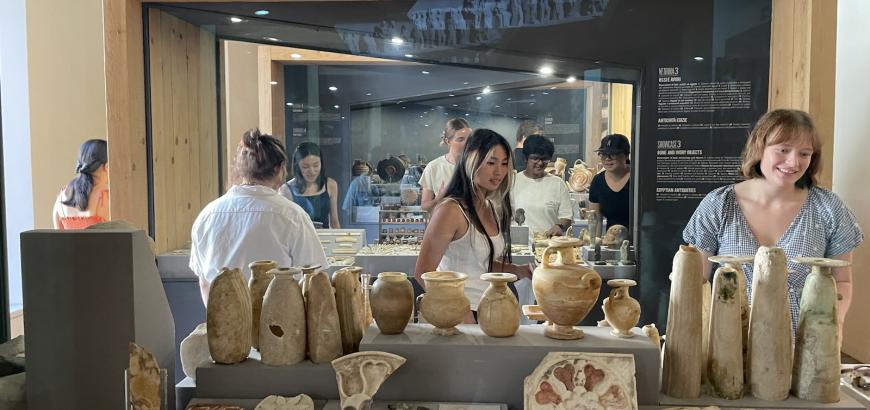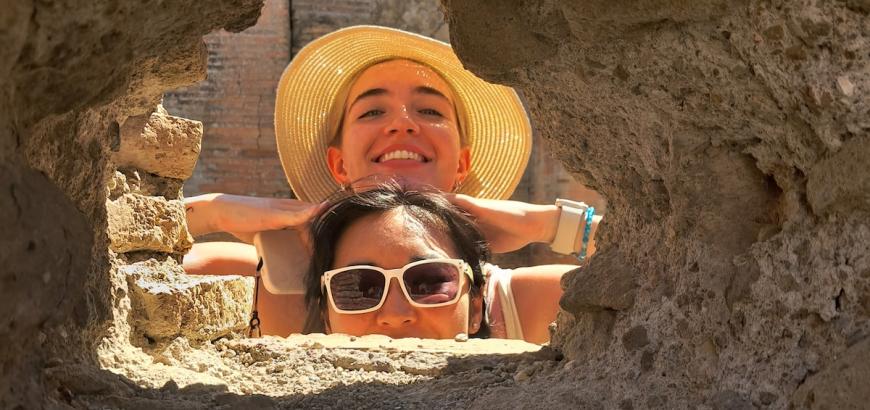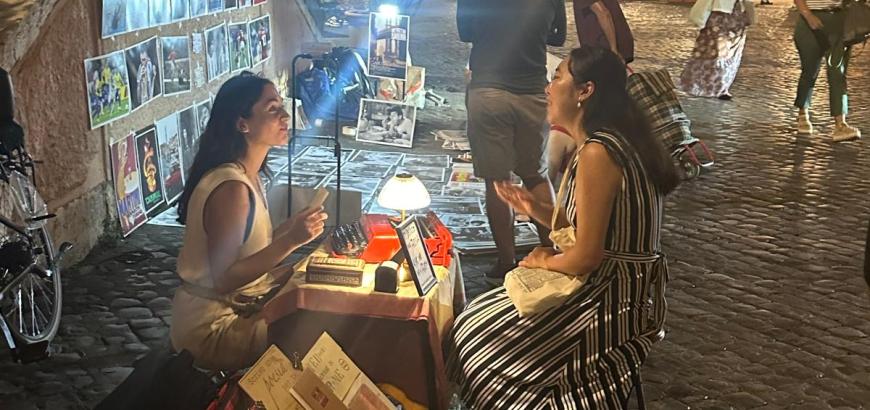by Sarah Levin-Richardson
For over thirty years, the Department of Classics has brought students to Rome to study the monuments, art, tombstones, and graffiti produced by the million-or-so ancient residents of the caput mundi, the “head of the world.” This year was no different: eight undergraduates and two graduate students joined Prof. Sarah Levin-Richardson for a four-week exploration of ancient Rome. Each student taught a famous Roman monument (the Arch of Constantine was struck by lightning three days after the student presentation!), maintained a weekly reflection journal on the intersections of ancient and modern Rome, learned the physical layout of the ancient city, and created a travel guide for a hypothetical visitor to ancient Rome (modelled after the New York Times’ “36 Hours [in…]” series) that incorporated some of the different statuses and ethnicities present in the ancient city.
In fact, the various ethnicities, religions, and gender and sexual identities of ancient Romans were a frequent topic of conversation, from the Egyptian priests of the Temple to Isis and Serapis to the Palmyrene residents who lived neared the forum and made dedications in both Latin and Palmyrene; from the worship of Jupiter and Hercules to the Anatolian Great Mother, Iranian Mithras, and Syrian Elagabalus; from the male prostitutes who served clients in the heart of Rome’s forum to the emperor Elagabalus, who may have identified as a trans woman. The course also wrestled with histories of conquest, enslavement, and exclusion, from the crucifixion of the Apostle Peter in the Vatican circus and the construction of the Colosseum using money and enslaved labor from the sack of Jerusalem, to the imagery of a shackled Parthian father holding his infant son on the Arch of Septimius Severus, to the “stumbling stones” marking the homes of Italian Jews who were sent to death camps in World War II.
With classes held in the (relatively) cooler mornings, students had afternoons and weekends for their own activities. Students visited modern art museums, popped into Rome’s numerous churches, ate endless quantities of pastries, gelato, and supplì (fried rice balls), explored their neighborhood (Trastevere, full of cafes, street art, and nightlife), and travelled to the beach and to Florence.
The generosity of our donors—especially through the Roseanna Wabel McDermott Endowed Fund for Study Abroad and the Ringland Classics Travel Fund—is instrumental to the success of this program. Through their past and continuing gifts, we were able to meet 100% of our students’ financial needs!



